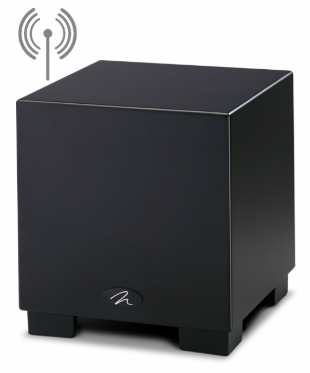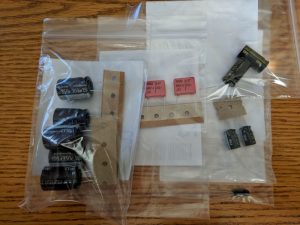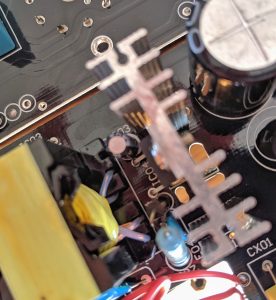It costs a bit, but it takes a heck of a DAC to get me to like digital music. I admired some of its attributes, but there were others I could never get around. After using typical mass market CD players, I bought the Pioneer Elite DV-45A due to its ability to play back DVD-Audio and SACD; I bought a DV-578A as a backup. “This is OK, but…” was one of those phrases that ran through my mind. Higher resolution recordings did sound somewhat better, but again, digititis would set in and I’d be turning the volume way down or shutting the system off.
The Oppo BDP-105 was a big improvement–it has a wide and deep soundstage in comparison to the abysmal DV-45A, and lost some of that harsh digital edge and having a more full-bodied sound. I lived with its sound for a few years with very few sonic issues, except that I was using it primarily as a network player to access FLAC files on my server. It worked, but here were issues with the playback. No gapless. No way to stream DSD from the server over the network. And JRiver was (and still does) crash often regardless of which computer it runs on, making the experience less than satisfactory. Oppo’s own Media Control app was adequate.
I considered adding a streamer like the microRendu or ultraRendu, but I still wouldn’t be able to access the 300+ ripped SACDs on my server.
I upped my game and have a PS Audio DirectStream Jr. in house. I bought it shortly before they killed Junior, due to supply issues. It uses the same basic concept as the big brother DirectStream, so it provides pretty much the same sound quality with that last little bit of refinement that I likely wouldn’t hear anyways.
I won’t go into the architecture, other than to say that unlike other DACs, the PS Audio DS DACs do not use a DAC chip. They use FPGAs to process a digital signal which is upsampled to 20X DSD; for the output, this is downsampled to 2X DSD and output as analog, using only transformers to filter the output (so it avoids all the brickwall filtering of PCM-based DACs). One additional advantage is that the unit is upgradeable. If a new sampling rate or bit rate comes along, or another feature of some sort, it gets written into the next firmware. I’m currently running Snowmass on the DSJ.
The improvement is noticeable. The digital glare is pretty much gone. Anything remaining is probably on the original recording. I hate to repeat marketing lingo, but there are times while listening to CDs that I did indeed here parts of the music that I have been missing. It is a very nice, smooth sound that is also incredibly detailed.
One draw for me with the DSJ was the built-in Bridge II. This is the network component which lets you use the DSJ as a player/streamer. (It also has the usual DAC inputs, and an I2S input for a compatible disc player.) JRiver could use it, but I discovered the setup was still clumsy, and given JRiver’s multitudes of settings, there was no guarantee I was getting a bit perfect stream to the DAC. Not only that, I was using the Qobuz beta program at the Studio level (which offers up to 24-bit/192kHz streaming), and I had no way to play it on the DSJ without using some kludge on a smartphone to make it happen.
The more I read about it, the more I started leaning towards Roon. It has a reputation of getting a clean, lossless, bit-perfect audio to whatever device it streams to, up to its maximum resolution. (So it can cast 24/96 to a Chromecast Audio, for instance.) It also integrates Qobuz and Tidal, so you can not only browse your own library, you get access to millions of tracks that are only a few clicks or taps away.
There are two drawbacks to Roon. First, it is expensive. The cost is about $120/year or $500/lifetime. But it is well supported, even if support of new features can be somewhat glacial. It also requires some computing horsepower to make it work ideally. They recommend a good quad core processor, plenty of memory and a SSD so that browsing the library is seamless. In other words, unless you have a pricey NAS with a lot of computing power, you are going to have to run it on a separate computer. This server component is called Roon Core.
To that end, I put together one of those Intel NUC mini-computers. These offer full-powered processors (i3, i5 or i7), two memory slots (load ’em up), and room for both a 3.5″ SSD and one of the smaller M.2 SSDs. There are also numerous ports–plenty of USB ports, an HDMI port, you name it. I went with an i3, processor, 8GB of memory (to start), and a Crucial M.2 SSD. The size is no bigger than a stack of maybe four or five CD jewel cases.
It not only runs Roon Core, I decided to start using Mezzmo again, since now I had a silent, low-powered computer to run it on. (Mezzmo runs only on Windows, but has features none of the other video servers have.) I have a couple of other processes I can now offload from my NAS, which makes it run more efficiently. I can tuck it in the basement on my network rack and run it headless, but decided to connect it to the 4K TV for now.
So far, this combination works mostly well enough, yet I am having a few glitches playing back DSD files (stored as .dsf files) over the network, as it is a bug in the Bridge II. So I will wait another update or so before deciding if I might want to add a streamer of some sort.
I haven’t introduced the rest of the household to Roon yet, but I’m sure it’s simple enough to use. I may still use Pandora in many instances, but it is easy to direct music to any device, or group of devices, and each user can have their own profile.
So I’ve mostly got this nailed down. I just need to refine things a bit, but in its current state, it’s certainly livable and working well.



 So, what is the Vandersteen 2Ce all about?
So, what is the Vandersteen 2Ce all about?